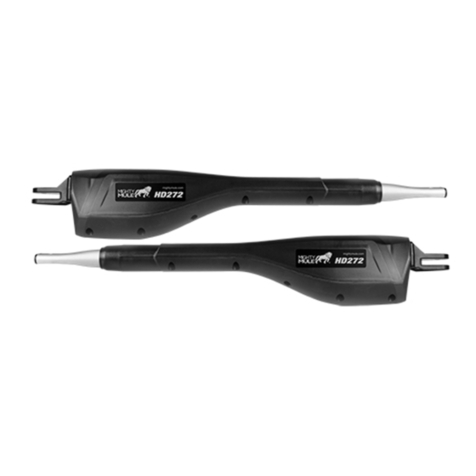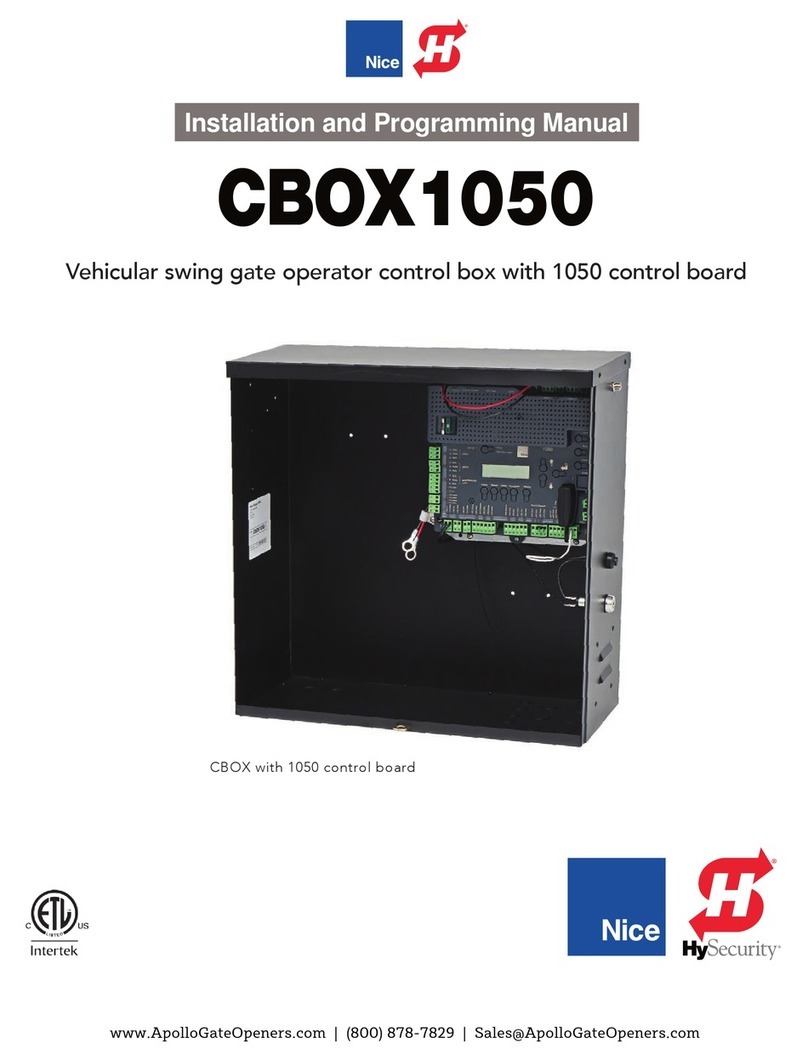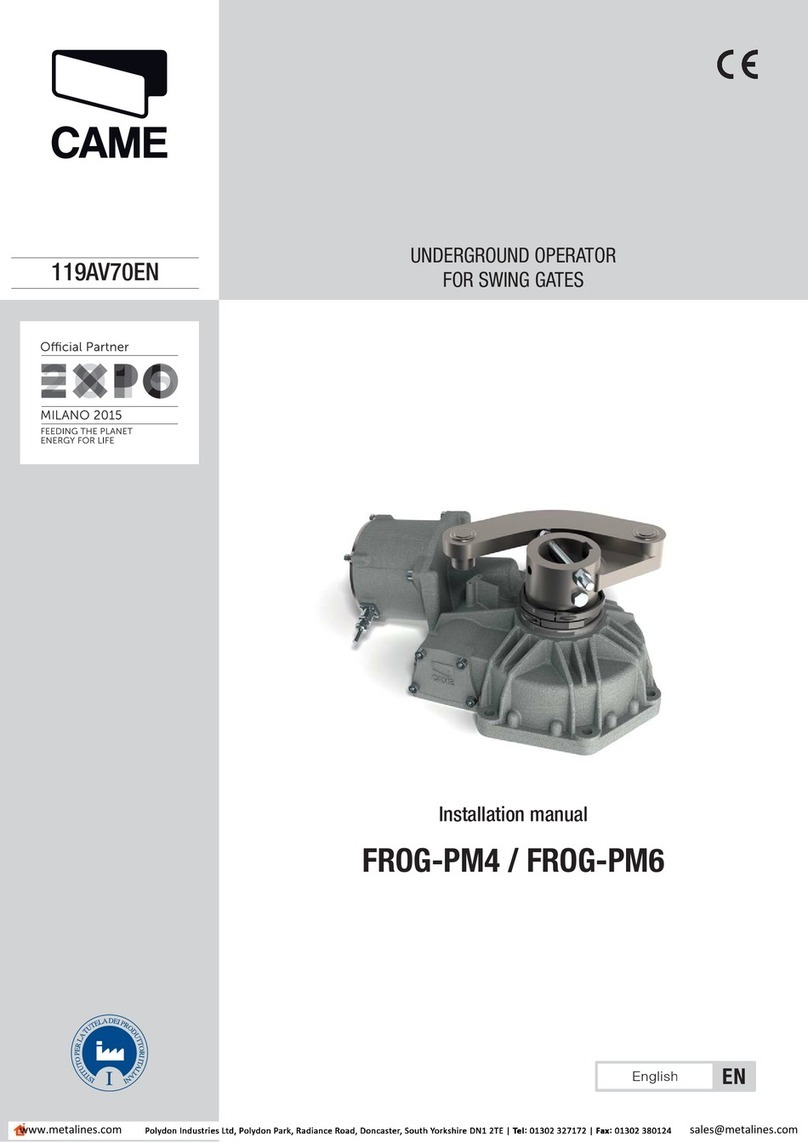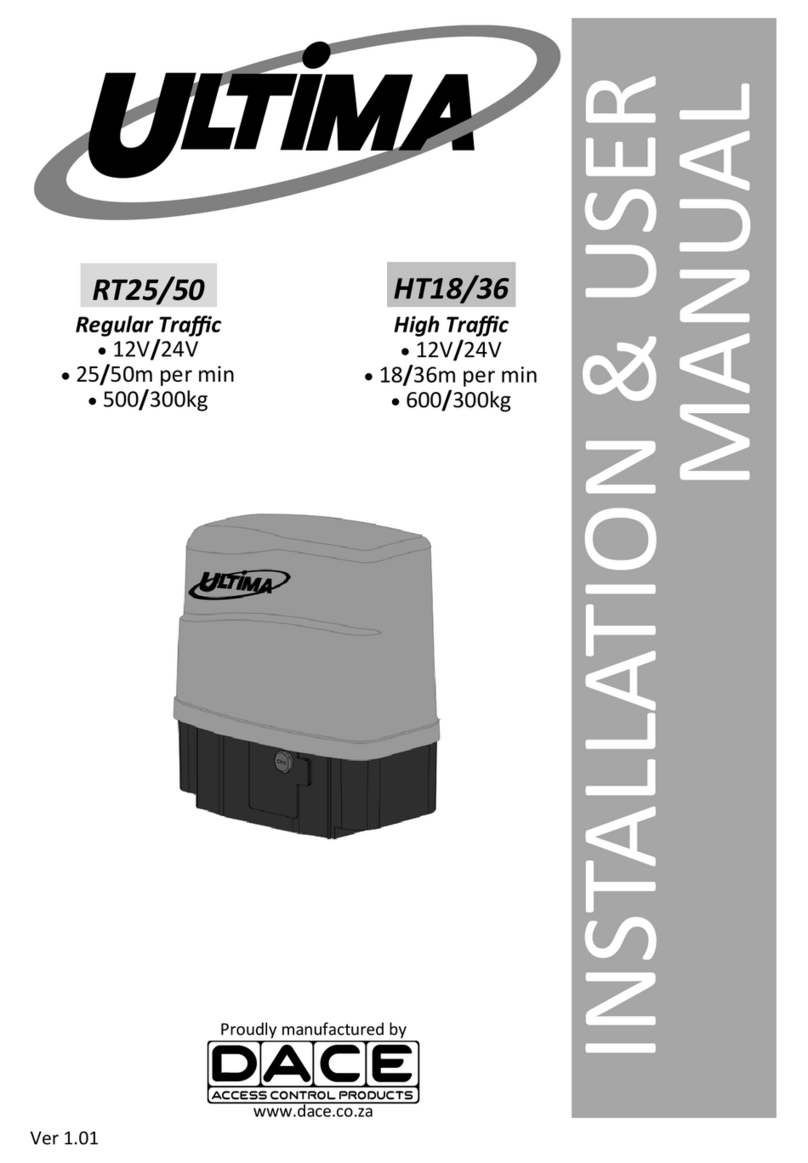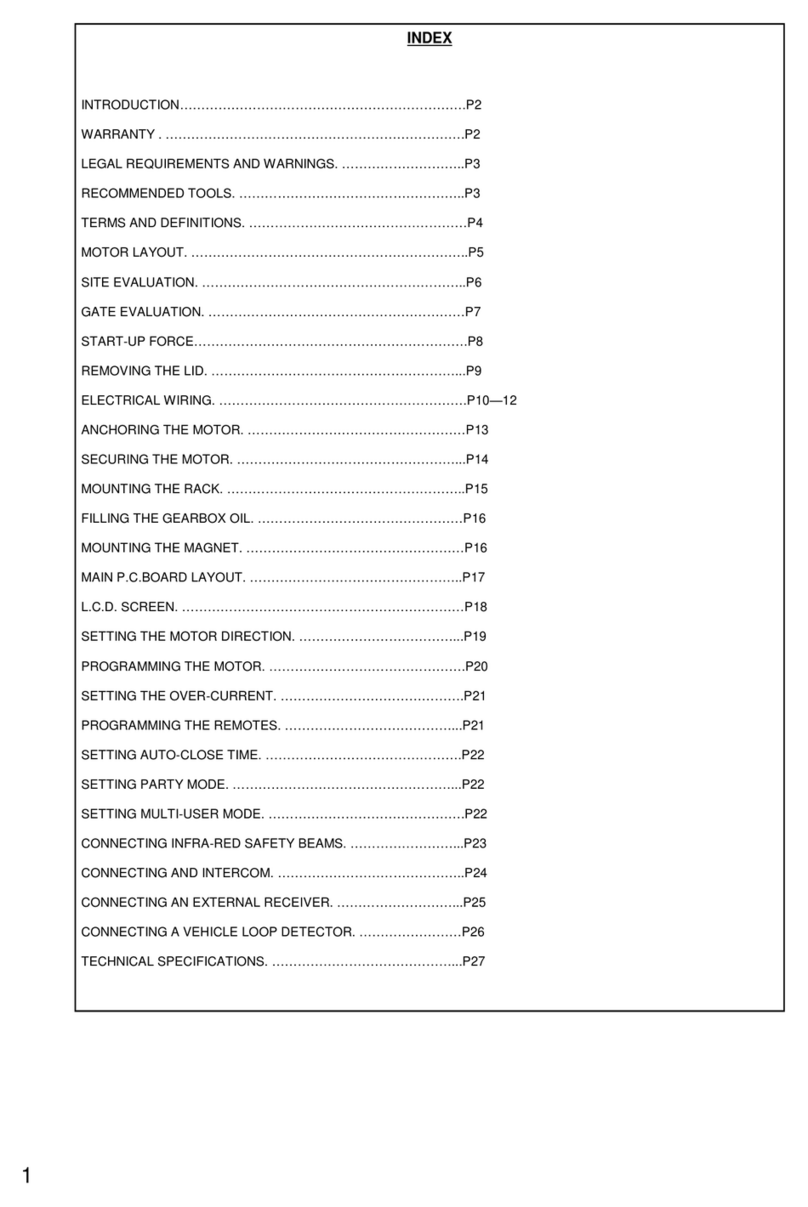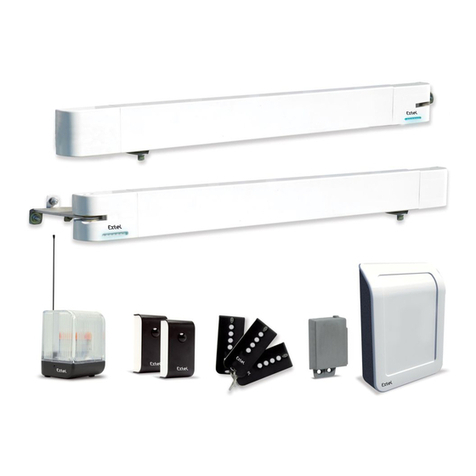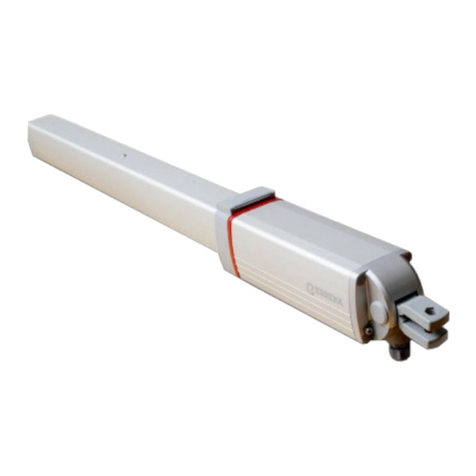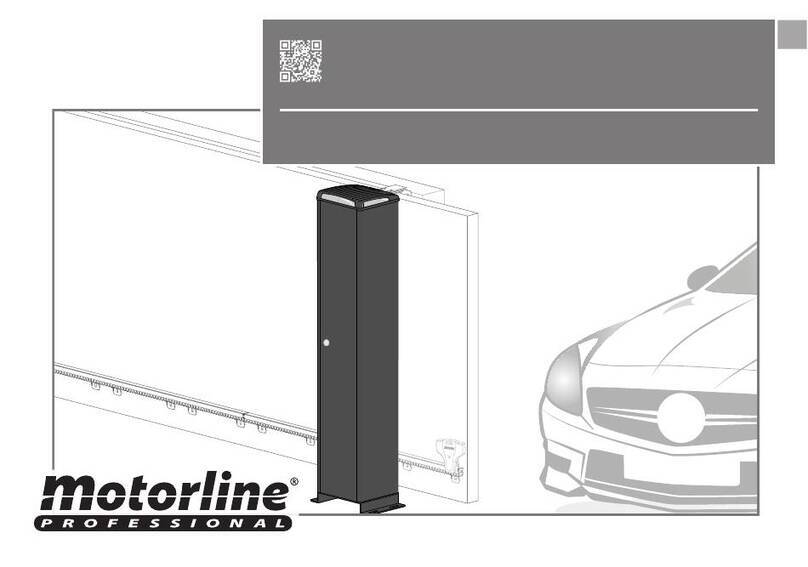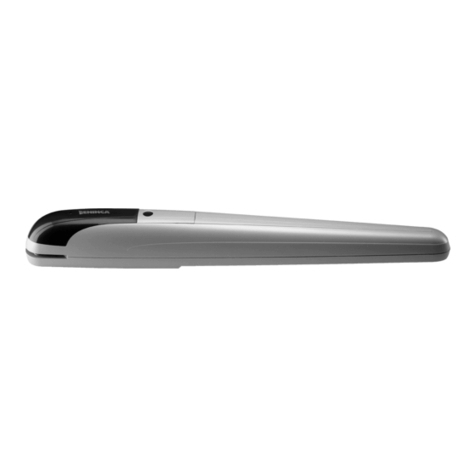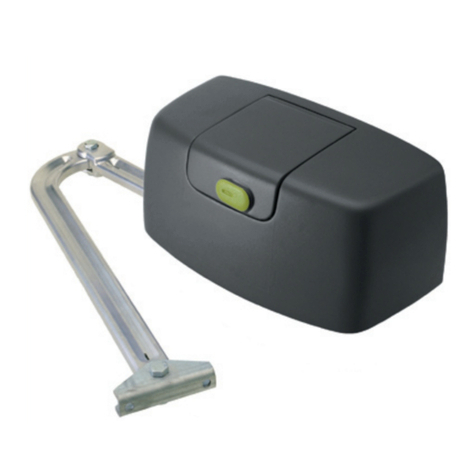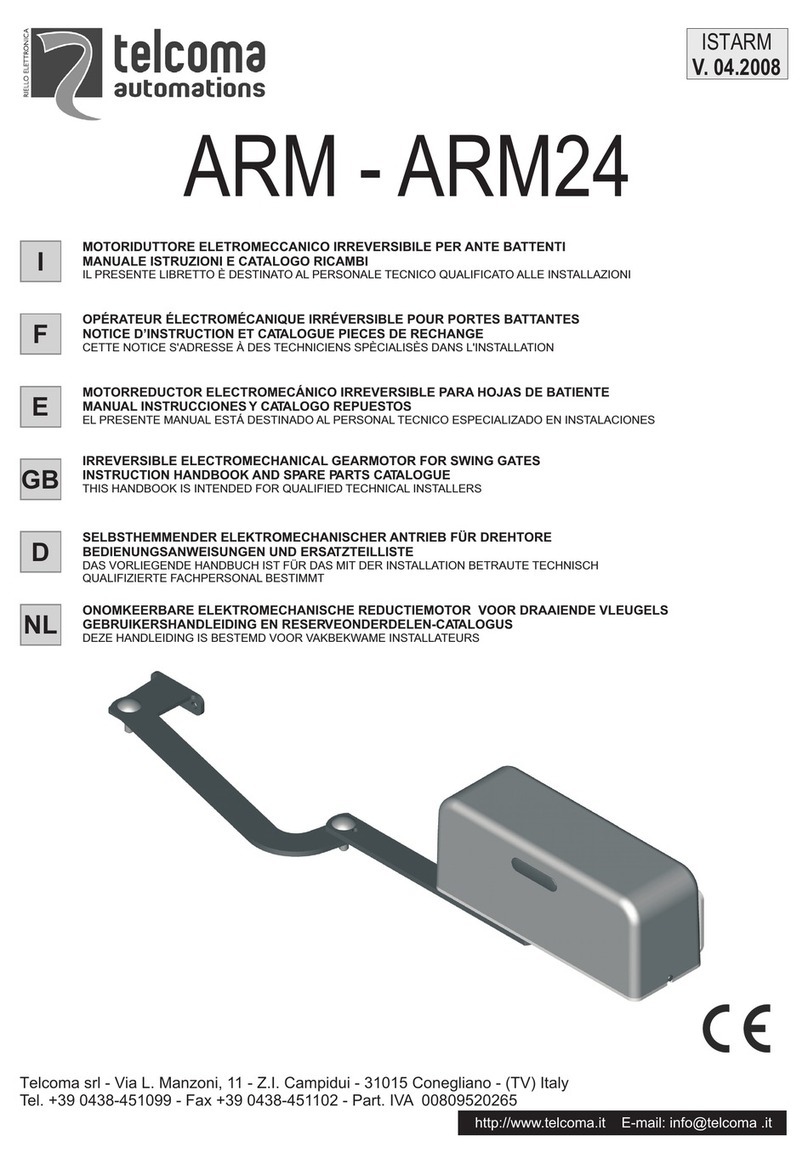
INTRODUCTION.
The Compact is designed to offer the latest technology available in a compact, easy to install and use package. .
The Compact is designed for do me stic applications where a “no fuss” easy to operate motor is needed.
GENERAL INFORMATION AND WARNINGS.
Please read these instructions before installation begins. The manufacturers have taken all reasonable steps to ensure that the gate operator is
safe to install and use. However it must be remembered that a gate is a heavy piece of moving equipment and may cause serious damage or
injury if the gate strikes a vehicle or person. The gate operator has built in over current sensing electronics, this means that the gate will stop
and re-open if an object is struck, however this means that the gate will physically strike the object before stopping. It is therefore strongly
recommended that
DuraOptic infra-red safety beams are installed to reduce the risk of the gate striking an object.
Note, The installation of beams does not guarantee against the gate striking an object in its path while moving.
Never allow children to play on or near any automation equipment.
Never allow children to play with any remote operator.
Never operate the motor when it is out of direct sight.
WIRING REQUIREMENTS. The electrical wiring of this operator should be done with extreme care as this can cause injury or even death
if not done correctly.
The operator is supplied with a 220vac—16vac transformer, this transformer must not be opened in any way whatsoever. The transformer
should be placed inside the house and then the 16vac is run to the motor. The minimum wire requirements for 16vac are 1.5mm three core
cable. (See electrical wiring in this manual for more details)
NOTE if 220vac is run to the motor a registered electrician must be used to install the wiring. This is a legal requirement. 220vac must be
run in a dedicated conduit, NO other cable may be placed in the same conduit.
ENSURE THAT the following items are checked before any installation is done.
1. The rail is level. The gate must not run o n i ts own at any sta ge.
2. The wheels are turning freely and are not jammed.
3. The gate is not bent or bowed in any way.
4. The rail has sufficient end stops so that the gate can never run off the end of the rail.
5. The portal is constructed in such a way that the gate can not fall over.
6. The rollers are turning freely and are not jammed.
7. The anti lift device is sufficient in order to stop the gate from being lifted off the rail.
8. The gate mass or start-up force do not exceed the maximum as stated in the specifications.
9. The gate does not stick or jam in the catch bracket when closing or opening.
10. Extreme care should be taken when automating a gate that is constructed out of any solid type of material such as wood, as wind resis-
tance can cause over current problems.
11. The gate must not exceed the maximum number of operations stated in the specifications.
If any of the above points are not satisfactory DO NOT INSTALL THE OPERATOR until all the points are rectified.
Remember that if a gate causes injury or damage due to faulty installation, the law will look at the installer as the guilty party. Please ensure
that ALL of the above points are checked before installation. The installation of the gate operator will not rectify any of the above problems.
This gate operator is not a security item.
Re comme nde d t ools ne e de d
DRILLING MACHINE , MASONARY AND METAL BITS
8mm / 10mm / 17mm SPANERS.
SCREWDRIVERS ASSORTED.
SPIRIT LEVEL.
SPADE.
PICK.
MULTIMETER.
TAPE MEASURE
SIDE CUTTERS
ANGLE GRINDER
HACKSAW.
